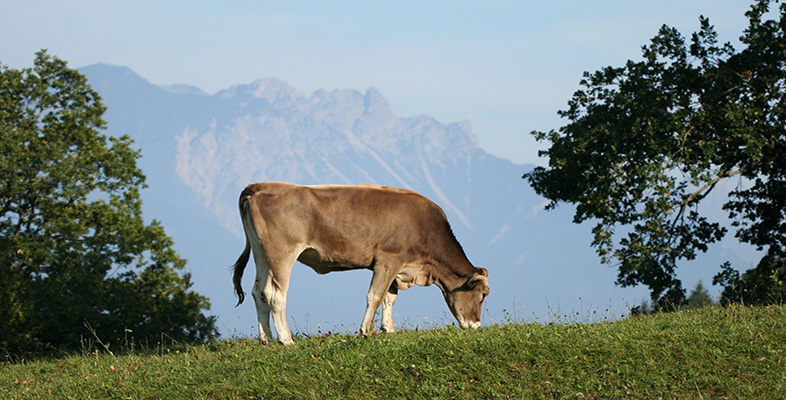8.2 Protein shortage
Most plant leaves and stems contain very low levels of protein and so herbivores need to make maximum use of the amount available. You will recall that proteins in the diet are digested to amino acids, which are then absorbed into the bloodstream. Some of those amino acids are used to produce the mammal's own proteins (Section 4.1), but the proportions of different amino acids can be crucial. Most mammals are able to interconvert some types of amino acid into others, so the amino acids that are essential (i.e. have to be supplied in the diet) may be relatively few. Nevertheless, even in a diet low in protein, there are likely to be amino acids that cannot be used at that time and these extra ones cannot be stored. They must therefore be removed from the body. They are first converted by the liver into urea, which (in most species) is excreted by being dissolved in significant quantities of water and then passed out in urine. However, ruminants have a remarkable ability to recycle urea, via the microbes in their gut. The urea is extracted from the blood by the salivary glands and is reintroduced into the gut in the saliva. (You may recall from Section 5.1 that ruminants produce particularly large volumes of saliva.) The microbes use the urea to synthesise their own amino acids (a synthesis that mammals cannot carry out) and, when the gut microbes die, their proteins can be digested and used again by the ruminant. This recycling has another advantage for the ruminant: it reduces significantly the volume of urine produced and so conserves water.
SAQ 15
One ruminant derives particular benefit from this physiological adaptation, enabling it to survive on very little water and a low-quality forage. What is this mammal and what other special adaptations to desert dwelling does it display? (Reread LoM p. 103 if you need to refresh your memory.)
Answer
The animal is, of course, the camel. The special adaptations listed in LoM are:
They can close their nostrils to keep out sand during sandstorms.
They can eat dry, thorny vegetation that is inadequate to sustain most other large mammals.
They can store fat in their humps to sustain them during periods of famine.
Their droppings are very dry and their urine very concentrated.
They can allow their body temperature to rise higher than in most other mammals before they begin to sweat.
Their light-coloured fur reflects solar radiation, and also acts as an insulator, in this case reducing the amount of heat gained from the environment.
They can live for up to two months without drinking.
When they do drink, they can take in huge quantities of water - up to 120 litres at a time.
The contrast between the camel and other desert mammals is striking. Camels need to drink only occasionally, whereas desert hindgut fermenters, like asses, have to drink daily to take in enough water to make urine.
